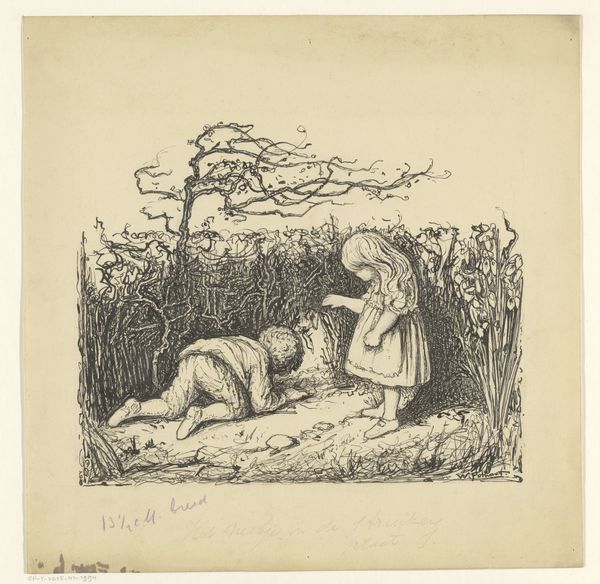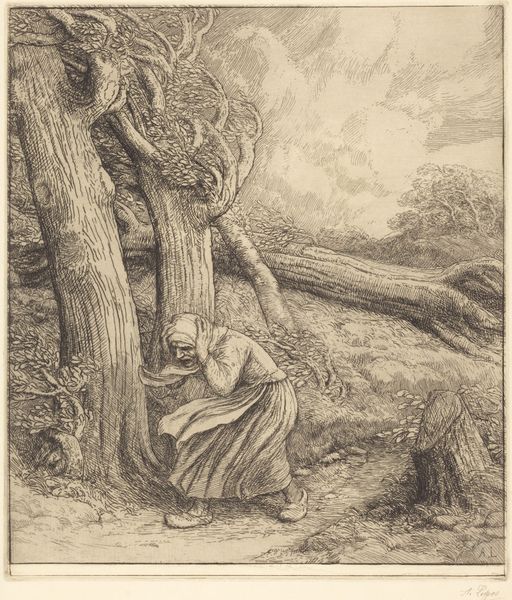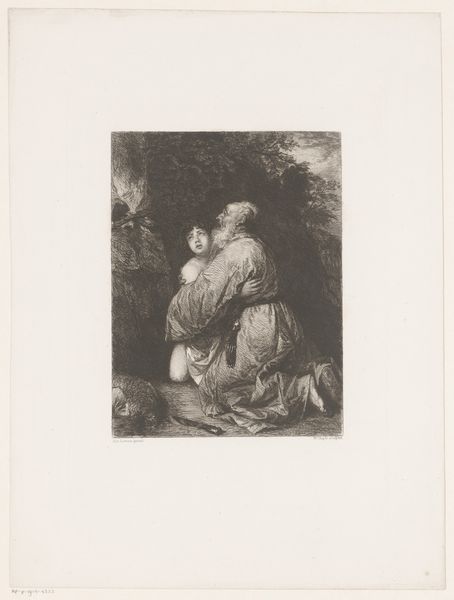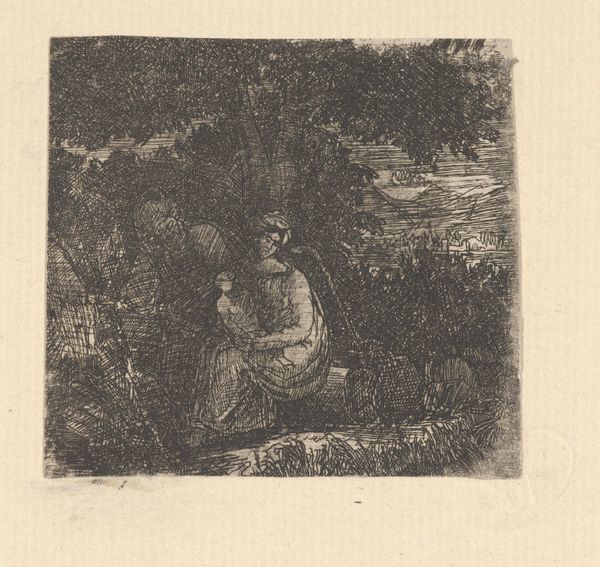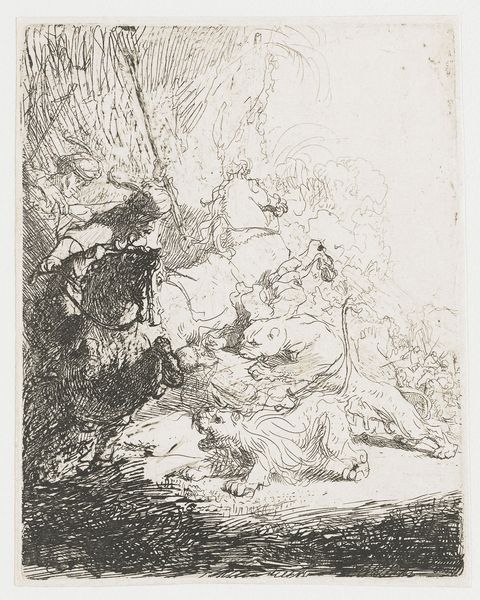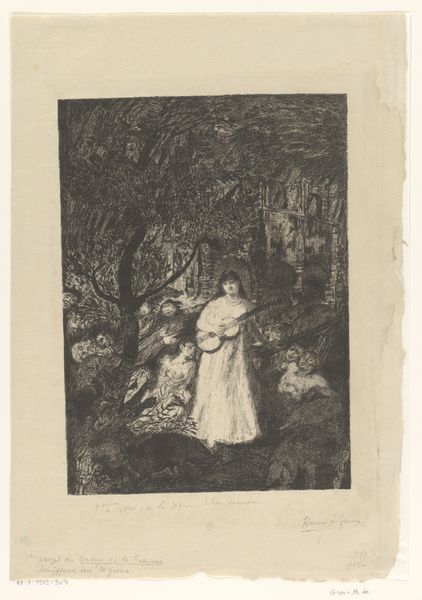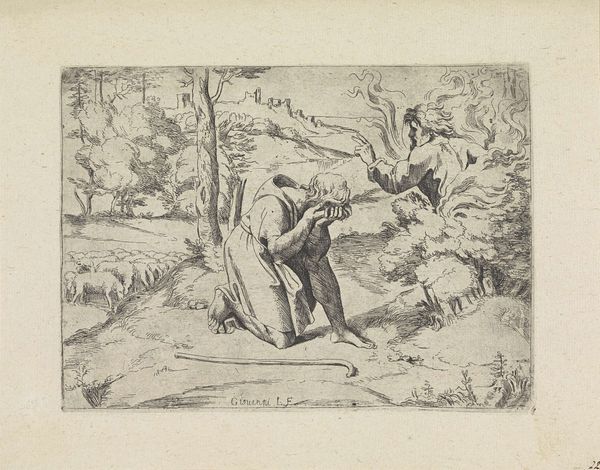
Illustrationsudkast til H.C. Andersen, "Dynd-Kongens Datter" 1869
0:00
0:00
Dimensions: 99 mm (height) x 98 mm (width) (billedmaal)
Curator: This is a preliminary illustration by Lorenz Frølich, made in 1869, titled "Illustrationsudkast til H.C. Andersen, "Dynd-Kongens Datter" – it is rendered in pen and ink. What is your immediate take? Editor: Brooding. Melancholic, even. The stark contrast between the dark inks and the paper creates an unsettling atmosphere. It hints at a narrative weighed down by a sense of foreboding. Curator: Well, let's delve deeper into the narrative it depicts. It’s meant to accompany Hans Christian Andersen's story, "The Marsh King's Daughter." Frølich, as an illustrator, often took on subjects of folklore and myth; notice how the line work seems quite deliberately "rough," almost unfinished. It’s like we are seeing the initial stages of the story emerging from the marsh itself. Editor: Exactly! And considering Andersen’s own fraught relationship with class and societal acceptance, this sketch evokes complex themes. The "Marsh King's Daughter" is a story rife with otherness and prejudice— a hybrid creature neither fully accepted in the human world nor wholly belonging to the swamp. That initial rejection, the liminal space she occupies… it’s all captured here in Frølich’s stark portrayal. Curator: I'm struck by how Frølich utilizes line to convey not only form but also texture. You can practically feel the dampness of the marsh and the rough bark of the tree, made even more prominent given it is, indeed, a sketch. One can imagine him working quickly to capture a fleeting idea for mass distribution, an initial sketch created from the means and for the means of production. Editor: I see it reflecting broader anxieties around identity and belonging, not only the daughter's, but also those experienced by marginalized communities throughout history. Her struggle mirrors the outsider’s search for acceptance and self-definition within oppressive structures, a pertinent theme then and even more relevant now. Curator: A relevant observation indeed! What I also admire here is Frølich's ability to suggest an entire narrative within a single frame, relying almost entirely on ink and paper and his artistic license. Editor: I agree. It reminds us how deeply embedded certain social allegories are within these seemingly innocent fairy tales, how easily those continue to echo. This simple ink drawing invites us to unpack layers of historical and social commentary.
Comments
No comments
Be the first to comment and join the conversation on the ultimate creative platform.
